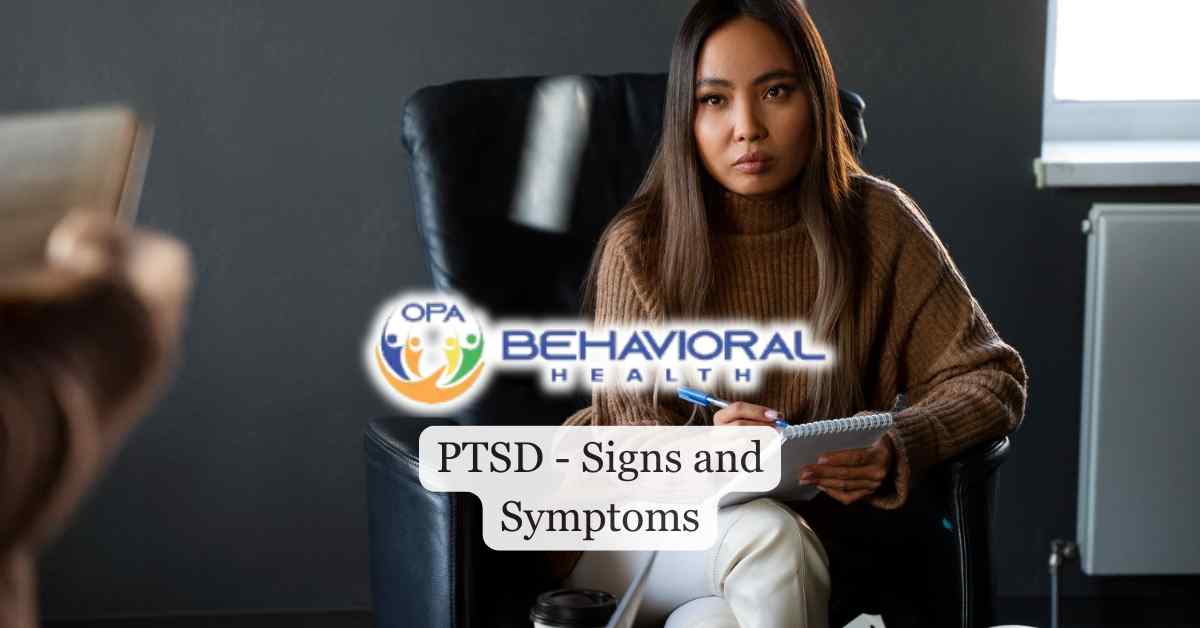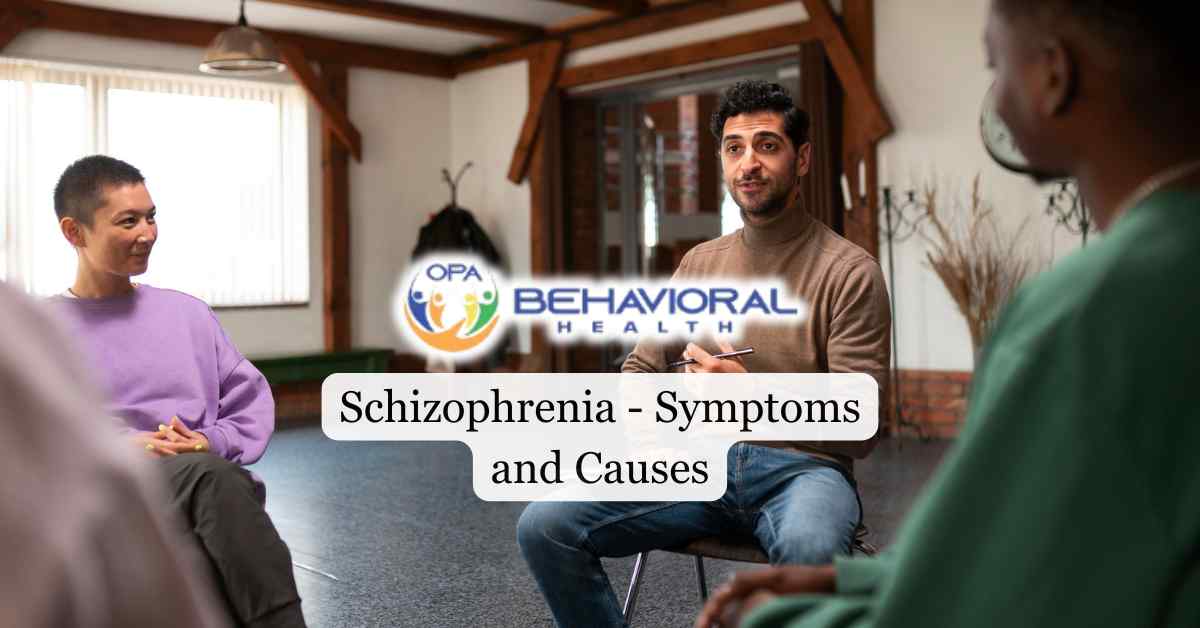Post-traumatic stress disorder (PTSD) is a mental health condition that can develop after an individual experiences or witnesses a traumatic event. PTSD can show itself in many different ways, impacting not just a person’s mental and emotional health, but also their physical well-being and ability to function in daily life. Recognizing the signs and symptoms of PTSD is vital for identifying the disorder early and pursuing the right treatment.
This article explores the various signs and symptoms of PTSD, emphasizing the importance of awareness in effectively managing this condition.

Re-experiencing Trauma
When you’re grappling with PTSD, re-experiencing trauma can feel like being thrust back into your worst nightmare. It’s the most typical symptom of PTSD, characterized by involuntary reliving of traumatic events through vivid flashbacks and distressing memories.
You might suffer from nightmares related to the traumatic event, leading to significant sleep disturbances and emotional distress.
During flashbacks, physical sensations like pain, sweating, and trembling can intensify the emotional experience and trigger panic attacks. Constant negative thoughts resulting from re-experiencing can lead to feelings of guilt or shame, further complicating your emotional state.
Re-experiencing symptoms can occur at any time, being provoked by reminders of the trauma, and may significantly disrupt your daily functioning and relationships.
Avoidance Behaviors
You may find yourself avoiding specific places or people associated with the trauma, leading to significant social withdrawal and isolation. It’s common to seek out coping mechanisms like distraction through work or hobbies, as you try to keep your mind occupied and disengaged from distressing memories.
However, this avoidance can result in a loss of interest in activities you once enjoyed, further contributing to feelings of disconnection and loneliness. Emotional numbing frequently accompanies these behaviors, making it difficult for you to experience a full range of emotions and diminishing your overall quality of life.
Another mental health disorder which also involves practicing avoidance behaviors is anxiety, which often coexists with PTSD. Recognizing the impact of avoidance and seeking professional support can be crucial steps in addressing these challenges and working towards healing
Hyperarousal Symptoms
Living with PTSD often means experiencing a constant state of alertness, as if danger could strike at any moment. This heightened state of anxiety, known as hyperarousal, can lead to a range of distressing symptoms that impact your daily life.
You may find yourself easily startled by sudden noises or movements, making it difficult to relax even in safe environments. Chronic irritability and angry outbursts can strain your relationships and cause you to withdraw socially.
Sleep problems, such as insomnia or restless sleep, are common, leaving you exhausted and struggling to function during the day. Concentration becomes a challenge, affecting your performance at work or school.
The persistent vigilance for potential threats can also manifest in physical symptoms like rapid heartbeat, sweating, and gastrointestinal issues. Hyperarousal symptoms can be overwhelming, but it’s essential to remember that they’re a normal response to trauma.
Cognitive and Mood Changes
PTSD’s impact on your thoughts and emotions can be profound, altering the way you perceive yourself and the world around you. Cognitive changes may manifest as persistent negative thoughts, leading to feelings of guilt, shame, or hopelessness.
You might find it challenging to concentrate or make decisions, which can significantly affect your daily functioning and work performance.
Mood disturbances are also common, with emotional numbing being a prominent feature. You may experience a diminished ability to feel positive emotions and lose interest in activities you once enjoyed.
Negative emotions can become overwhelming, and you might develop distorted beliefs about safety and trust, leading to isolation and withdrawal from social interactions.
These cognitive and mood changes are essential for diagnosing PTSD, and they must persist for more than one month while disrupting your daily life.
Impact on Daily Life
PTSD symptoms can significantly disrupt your ability to function effectively in various areas, including work, education, and relationships. You may find it challenging to maintain focus and make decisions, leading to difficulties in job performance and productivity.
Emotional numbing and avoidance behaviors can cause you to lose interest in activities you once enjoyed, further diminishing your quality of life. Physical symptoms such as chronic pain and gastrointestinal issues can complicate daily functioning and contribute to other health problems.
PTSD also increases your risk of developing co-occurring mental health problems, like depression and anxiety, which can exacerbate impairments in daily tasks and overall well-being.
PTSD Symptoms in Different Populations
Although the core PTSD symptoms, such as intrusive memories and heightened arousal, remain consistent, their expression can vary based on factors like age and cultural context.
For example, children with PTSD may experience nightmares and re-enact trauma through play, while adults may struggle more with intrusive thoughts and emotional numbing.
Veterans often grapple with hyperarousal, irritability, and relationship difficulties, compounded by the stigma surrounding mental health in military culture.
Women, who are statistically more likely to develop PTSD due to experiences of sexual violence or abuse, may face additional challenges like depression and anxiety that complicate recovery.
Older adults with PTSD might encounter increased memory issues or cognitive decline, alongside a higher risk of social withdrawal and isolation.

Diagnosis and Assessment
Diagnosing PTSD involves a comprehensive assessment by a mental health professional, typically using the DSM-5 criteria. They’ll evaluate whether you’ve experienced a traumatic event and if your symptoms of PTSD have persisted for more than a month, significantly disrupting your daily functioning.
The diagnosis process may include structured interviews, questionnaires, and self-report measures to determine the presence and severity of your symptoms.
For a PTSD diagnosis, you must exhibit symptoms of re-experiencing the trauma, avoidance behaviors, negative changes in cognition and mood, and heightened arousal. These symptoms should be causing significant distress and impacting your social, occupational, or other important areas of life.
Your mental health professional will take into account any co-occurring issues, like depression or anxiety disorders, which often accompany PTSD. For personalized support, OPA Behavioral Health offers tailored PTSD treatment options just for you.
Final Thoughts from OPA Behavioral Health
Seeking professional help is crucial for individuals experiencing symptoms of PTSD, as untreated PTSD can lead to significant impairments in daily functioning and overall quality of life. The mental health professionals we work with across all of OPA Behavioral Health’s Florida locations can provide a proper diagnosis and develop an individualized treatment plan to help manage symptoms and improve well-being.








